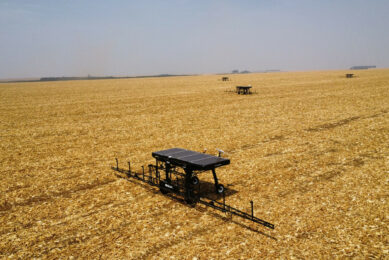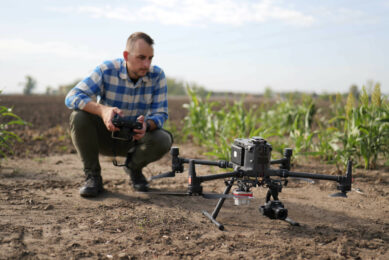Spraying drones help cassava growers in Cambodia increase yield

Drone spraying technology has been recently introduced in Cambodia’s cassava cultivations to help small-scale farmers improve yield while bringing down the costs of farm inputs.
Cassava is grown on over 600 thousand hectares of farmland in Cambodia. After rice, cassava is the most cultivated crop in the country. To meet the growing demand of cassava-based products (food, flour, paper and alcohol), Cambodian farmers have rapidly expanded their planting areas over the past years. And they have started applying agricultural drones in order to increase productivity.
Chhay Thi is an early adopter of spraying drones who owns 20 hectares of land in the Varin District, Siem Reap Province of Cambodia. This May, he ordered services from Chinese spraying drone manufacturer XAG’s local partner Red Sparrow Cambodia. They demonstrated the XAG Agricultural Drone on his 10-hectare cassava field.
One week’s worth of work done in an hour
Controlled by a mobile app, the drone flew over ridges of cassava plants, sprayed precisely along the pre-set route, and finished 8 hectares of herbicide spraying via unmanned control. “Without a spraying drone, this same amount of work would typically take farm workers more than a week to complete manually. The demonstration showed the same can be done within one hour by just one agricultural drone,” XAG states.
Although farmers in Cambodia are not yet facing a shortage of workers, rising costs of up to $18-25 per hectare when they hire workers for pesticide spraying, are a concern. Typically, a group of farm workers can spray 1 hectare per day, which is hardly enough to keep up during the cassava growing season.
Reduce overall planting costs
Besides the increased efficiency, drones are helping farmers like Chhay Thi to reduce overall planting costs. “If I have a spraying drone during busy seasons to help me with crop protection, I can save $8-10 per hectare that is normally spent on manual spraying. Drone operation also reduces the use of chemicals by 10-30%, so the resources and money saved can be reallocated to other crop cultivation,” Chhay Thi said.
According to manufacturer XAG, spraying drones don’t only improve yield, but they also ensure that farmers, who normally spray cassava with a backpack sprayer or a trailed sprayer, do not come into contact with chemicals.
Join 17,000+ subscribers
Subscribe to our newsletter to stay updated about all the need-to-know content in the agricultural sector, two times a week.



